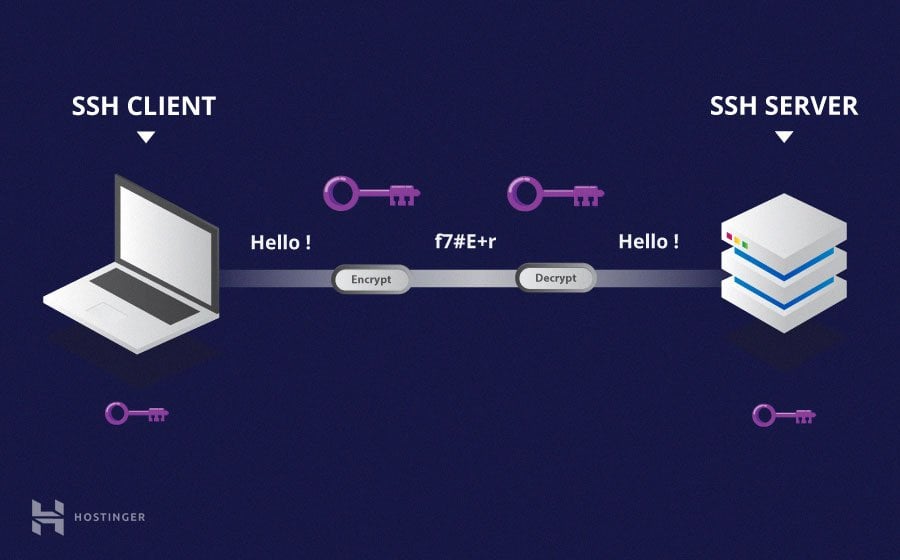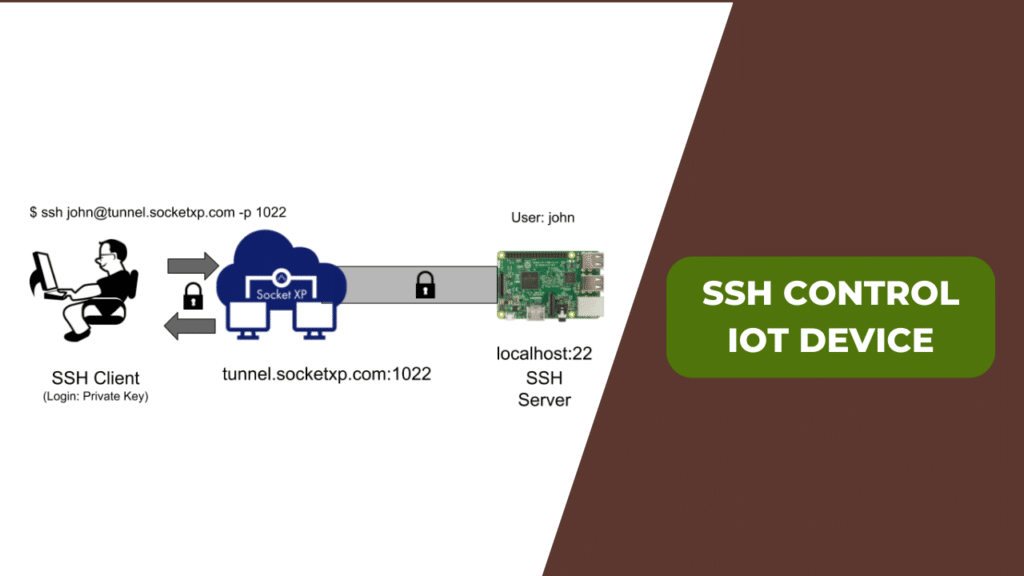Comprehensive RemoteIoT Device SSH Tutorial For Secure Connections
In today's interconnected world, understanding how to securely manage IoT devices remotely is more important than ever. RemoteIoT device SSH tutorial offers a step-by-step guide to connecting to IoT devices through SSH, ensuring data remains secure and protected from unauthorized access. Whether you're a beginner or an experienced IT professional, this tutorial will provide the knowledge you need to establish a robust remote connection.
As the Internet of Things (IoT) continues to expand, so does the need for secure remote management. IoT devices often operate in environments where physical access is not feasible, making remote management essential. This remoteIoT device SSH tutorial will walk you through the process of setting up secure shell (SSH) connections, enabling you to monitor and control your devices from anywhere in the world.
This article dives deep into the mechanics of SSH for IoT devices, covering everything from basic setup to advanced configurations. By the end of this guide, you’ll be equipped with the tools and knowledge necessary to manage your IoT devices securely and efficiently. Let’s get started!
- Unveiling Lexi Thompsons Family Ties Discoveries And Insights
- Dive Into The World Of Brian Tyree Henrys Height Surprising Revelations And Unseen Perspectives
Table of Contents
- Introduction to RemoteIoT Devices
- What is SSH?
- Why Use SSH for IoT Devices?
- Setting Up SSH on RemoteIoT Devices
- Connecting to RemoteIoT Devices via SSH
- SSH Security Best Practices
- Troubleshooting Common SSH Issues
- Advanced SSH Configurations
- Tools for Managing RemoteIoT Devices via SSH
- The Future of RemoteIoT Device Management
Introduction to RemoteIoT Devices
RemoteIoT devices are an integral part of modern technology, enabling businesses and individuals to monitor and control systems from afar. These devices range from simple sensors to complex industrial equipment. The ability to manage them remotely is crucial for maintaining operational efficiency and security.
Types of RemoteIoT Devices
There are various types of RemoteIoT devices, each with its own unique set of requirements and challenges. Some common examples include:
- Unveiling Hattie Davis A Trailblazing Civil Rights Icon
- How Tall Is Nle Choppa Exploring The Height And Legacy Of A Rising Music Icon
- Environmental sensors
- Smart home appliances
- Industrial automation systems
- Healthcare monitoring devices
Understanding the specific needs of each device type is essential for effective remote management.
What is SSH?
SSH, or Secure Shell, is a cryptographic network protocol used for secure communication over unsecured networks. It provides a secure channel for data transfer, command execution, and file management. SSH is widely used in IT environments due to its robust security features.
Key Features of SSH
- Data encryption
- Authentication mechanisms
- Secure file transfer
These features make SSH an ideal choice for managing remoteIoT devices, ensuring data integrity and confidentiality.
Why Use SSH for IoT Devices?
Using SSH for IoT devices offers several advantages, including enhanced security, ease of use, and flexibility. By leveraging SSH, you can:
- Protect sensitive data from unauthorized access
- Remotely manage devices without physical presence
- Ensure compliance with industry standards
These benefits make SSH a preferred method for remote device management in the IoT ecosystem.
Setting Up SSH on RemoteIoT Devices
Setting up SSH on RemoteIoT devices involves several steps, from enabling the SSH server to configuring security settings. Below is a step-by-step guide to help you get started:
- Enable the SSH server on your IoT device
- Generate SSH keys for authentication
- Configure firewall settings to allow SSH traffic
Best Practices for SSH Setup
When setting up SSH, it’s important to follow best practices to ensure maximum security:
- Use strong passwords or public key authentication
- Disable root login
- Limit access to specific IP addresses
Connecting to RemoteIoT Devices via SSH
Connecting to RemoteIoT devices via SSH is straightforward once the initial setup is complete. Here’s how you can establish a connection:
- Open your SSH client (e.g., PuTTY, Terminal)
- Enter the device’s IP address and port number
- Authenticate using your SSH key or password
Tips for Successful Connections
To ensure a successful SSH connection, consider the following tips:
- Verify the device’s IP address and port settings
- Use a reliable internet connection
- Keep your SSH client software up to date
SSH Security Best Practices
Security is paramount when managing RemoteIoT devices via SSH. Implementing best practices can significantly reduce the risk of unauthorized access. Some key strategies include:
- Regularly update SSH software and firmware
- Monitor login attempts for suspicious activity
- Use intrusion detection systems (IDS)
By adhering to these practices, you can maintain a secure environment for your IoT devices.
Troubleshooting Common SSH Issues
Even with proper setup and configuration, SSH connections can sometimes encounter issues. Here are some common problems and their solutions:
- Connection refused: Check firewall settings and ensure the SSH service is running
- Authentication failure: Verify SSH keys and password accuracy
- Timeout errors: Optimize network settings and reduce latency
Resources for Troubleshooting
For further assistance, refer to the following resources:
Advanced SSH Configurations
For users seeking more advanced configurations, SSH offers a range of options to enhance functionality and security. Some advanced features include:
- Port forwarding
- Tunneling
- Key-based authentication with multiple keys
Implementing Advanced Features
To implement these features, consult the SSH configuration file (sshd_config) and make the necessary adjustments. Always back up your configuration before making changes.
Tools for Managing RemoteIoT Devices via SSH
Several tools are available to simplify the management of RemoteIoT devices via SSH. Some popular options include:
- PuTTY: A free SSH client for Windows
- OpenSSH: A widely used SSH suite for Unix-based systems
- SSHFS: A tool for mounting remote file systems over SSH
These tools provide a user-friendly interface for managing SSH connections and performing various tasks.
The Future of RemoteIoT Device Management
As technology continues to evolve, the future of RemoteIoT device management looks promising. Innovations in AI, machine learning, and quantum computing will further enhance the capabilities of SSH and other remote management protocols.
Emerging Trends in IoT Security
Some emerging trends in IoT security include:
- Zero-trust architecture
- Blockchain-based authentication
- Quantum-resistant encryption
Staying informed about these trends will help you prepare for the future of IoT security.
Conclusion
In conclusion, mastering the remoteIoT device SSH tutorial is essential for anyone involved in IoT management. By following the steps outlined in this guide, you can establish secure and efficient connections to your IoT devices. Remember to adhere to best practices and stay updated on the latest developments in IoT security.
We invite you to share your thoughts and experiences in the comments section below. Additionally, feel free to explore other articles on our site for more insights into IoT and related technologies. Together, let’s build a safer and more connected world!
- Medium Knotless Braids With Curls A Comprehensive Guide To Achieve Stunning Lowmaintenance Hairstyles
- Got It Wrong Outfits A Comprehensive Guide To Avoiding Fashion Mishaps

SSH Tutorial What is SSH, Encryptions and Ports

RemoteIoT Device SSH Tutorial A Comprehensive Guide For Secure Remote

Essential Tips for Using SSH Control IoT Device Securely